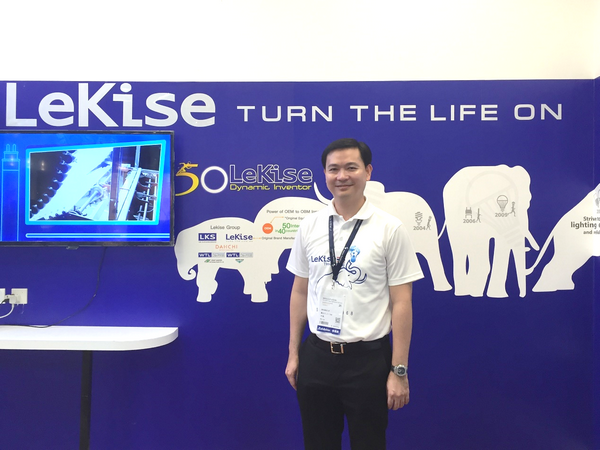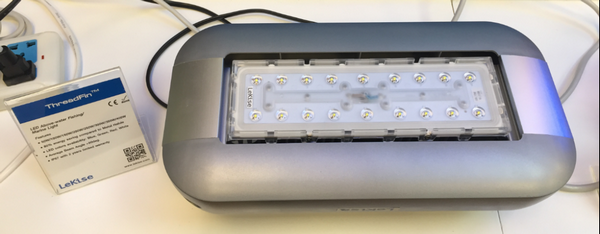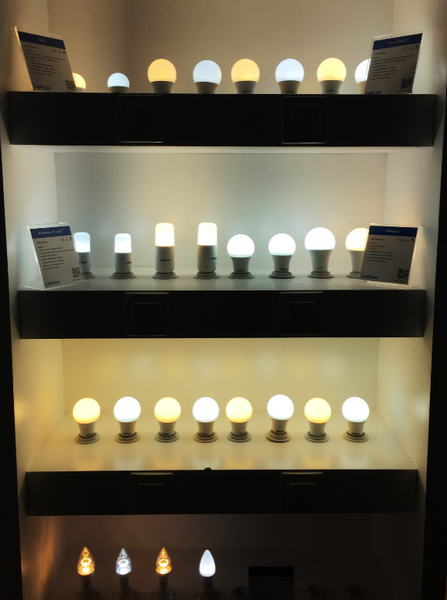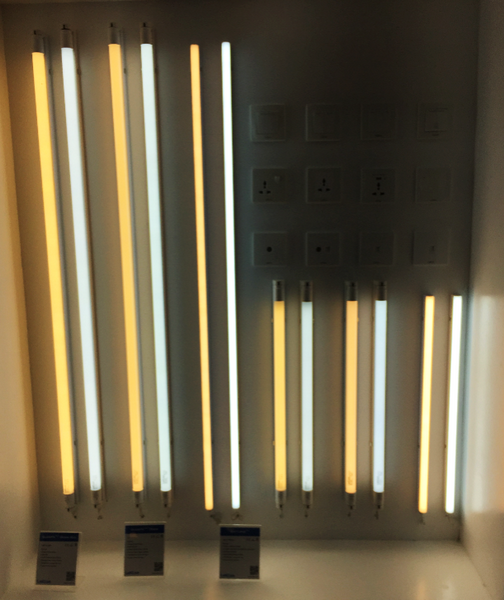(Author: Terri Wang of LEDinsidehttp:// Translator: Judy Lin, Chief Editor, LEDinside)
Main players in the LED industry, and large volume of visitors attended the annual Guangzhou International Lighting Show 2016, which runs from June 9-12. Although, fewer big lighting brands from U.S., Europe and China attended the show this year, there were plenty of newcomers. Many are focused on the international market, and plenty of manufacturers are hoping to use the platform to increase their exposure in China and the international market.
At pavilion 2.1 which features many renowned lighting brands, a surprisingly familiar brand Lekise Lighting booth appeared in sight. This is the first time the leading Thai LED lighting manufacturer attended the Guangzhou lighting fair. LEDinside had the rare opportunity to conduct an exclusive interview with the company CEO Somnuk Ovuthitham, who gave an overview of Lekise’s development strategy and outlook for Southeast Asia lighting market.
 |
|
Lekise CEO Somnuk Ovuthitham. (All photos courtesy of LEDinside) |
Lekise was established in 1968, and initially was an incandescent bulb manufacturer. The company became an incandescent bulb OEM for nearly 50 lighting brands including Chinese and Japanese companies by 1968. In 2009, the company set up a sales and marketing office, and started to take on LED lighting construction projects. A year later the company founded the Lekise Lighting brand, and by 2011 it started to invest in LED production lines in Thailand to in-house manufacture LED lighting products. In 2013, Lekise Lighting started to expand its oversea markets, and set up offices in Cambodia, Vietnam, Laos and other Southeast Asian countries. In 2015, the company started to enter the LED consumer lighting market and started selling its LED lighting products through supermarkets and other retail channels.
 |
|
Lekise LED fishing lights. |
The Lekise group’s three main business arms include paper production, lighting, and solar powered products. The company’s lighting revenue is roughly equivalent to US $80 million, comprising 30% of its LED lighting market share. Its lighting products can be found in application sectors including residential, commercial, outdoors, industrial and specialty lighting markets. The company’s main LED lighting products portfolio encompasses bulbs, tubes, downlights, ceiling lights, streetlights, tunnel lights, high bay lights, wallwashers and fishing lights.
 |
 |
|
Lekise LED bulbs and tube lights. |
|
In terms of market channels, the company’s traditional lighting products still mostly rely on a B2C (business to consumer) sales channel, while its LED lighting products are mainly being distributed and shipped through construction channels which construe 85% of LED product sales channels. The company is mostly undertaking outdoor streetlight, industrial park retrofits, and commercial lighting project. Lekise’s localization advantages in the Thailand market, enable it to directly conduct business with construction companies.
Asked about his outlook for Southeast Asia LED lighting market developments, Ovuthitham responded: “Despite the attraction from China’s low-priced products, local Southeast Asian construction sector clients and consumers have found it difficult to find reliable and good quality products from the mixed lighting products on the market. Hence, local lighting manufacturers still have Cost/Performance ratio advantages.” In addition, trade agreements signed between ASEAN country members has lifted tariffs from Thai exported products, this allows Lekise revenue to soar in the Southeast Asian market.
Moreover, the early set up of LED production lines raised Lekise’s in-house assembled lighting products to above 70%, and the remaining 30% is imported from Chinese OEMs or ODMs. Playing on its branded products and assembly advantages, Lekise is gradually expanding its oversea markets and founded branches in Thailand, Vietnam, the Philippines, Indonesia, Cambodia and China.
Asked about his thoughts on GILE 2016, Ovuthitham noted the lighting show was an international platform, in which he hoped attending the show would allow the company to develop its distribution channels, dealers, and agents, which will promote Lekise’s LED lighting products to a wider international market.
(Editor's Note: In a previous version the article said there were not many Chinese OEM or ODM imports in Thailand was a mistranslation. We have changed it to Lekise in-house assembles 70% of its products and only 30% is imported from Chinese companies as of June 20, 2016.)















